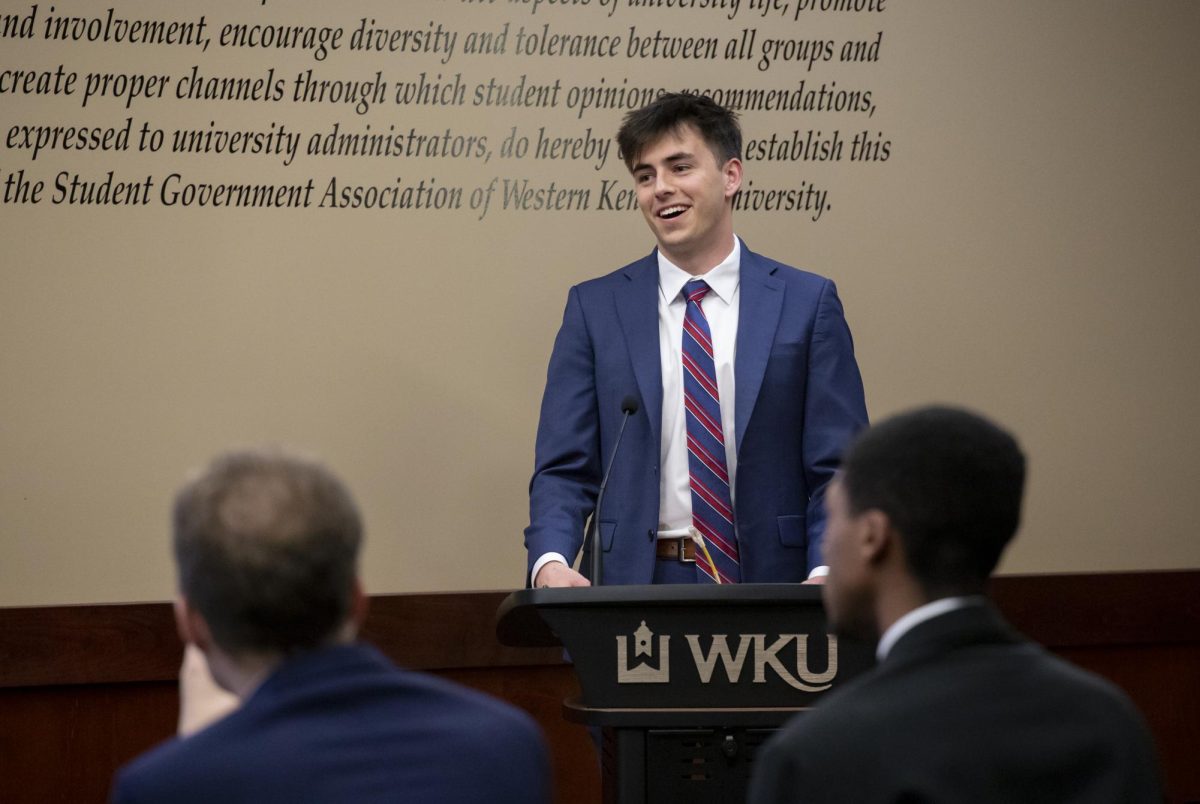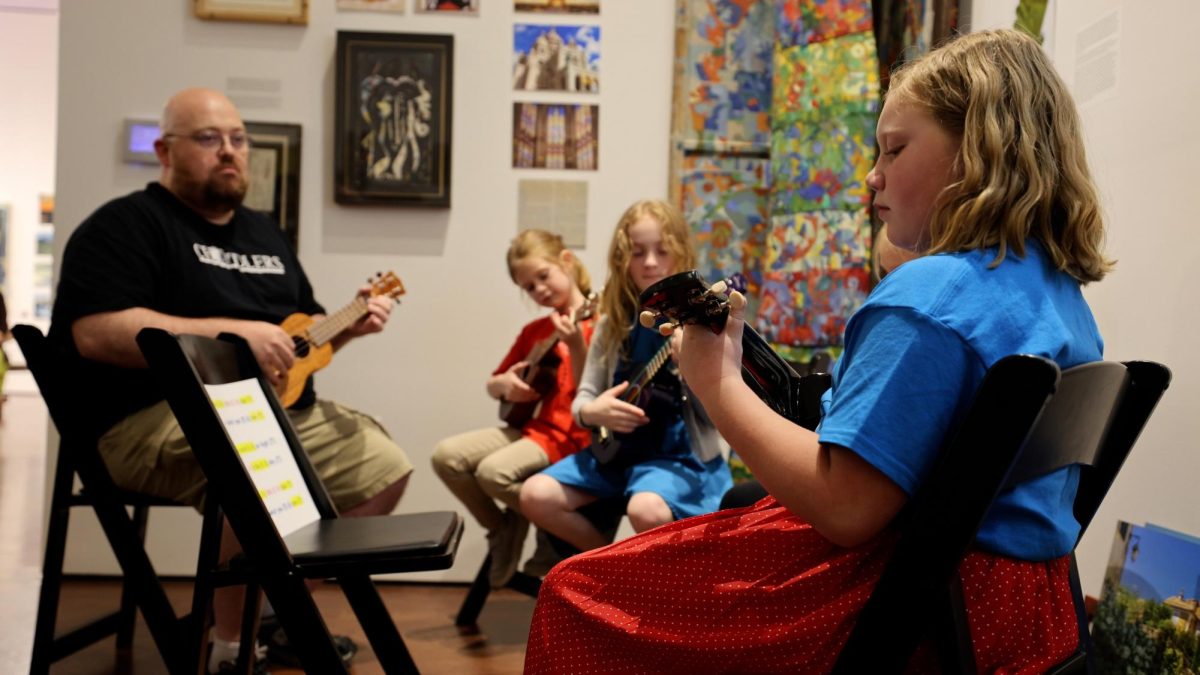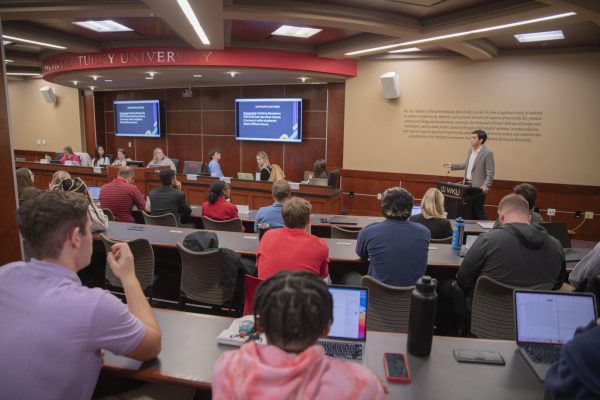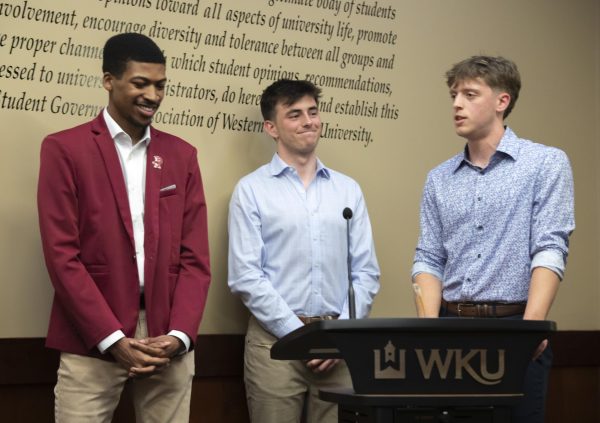WKU, other universities ask for more than $600 million
October 22, 2013
President Gary Ransdell made a guest appearance at Thursday’s faculty Senate meeting to discuss a budget model being drafted by Kentucky university presidents.
According to the latest version of the model, the universities are collectively asking for more than $52 million for the 2014-2015 school year to help pay for operating costs. Of that, WKU would receive roughly $7 million.
For the 2015-2016 school year, the universities are requesting more than $68 million.
State funding for higher education has continued to decrease for the last 11 years statewide, despite state-approved tuition increases. With this model, all universities are requesting more money for higher education for the upcoming business biennium, in addition to funding they will already receive.
“We’ve been putting a lot of work into this model, and this process gets a little crazy sometimes because you try to arrive at something that eight universities and the Kentucky Community and Technical College system can try to agree on,” Ransdell said.
He said the administrators are working to agree upon a final draft of this model that will be sent to the Council on Postsecondary Education before being sent to the state governor and the state general assembly. The figures presented in the model on Thursday were not finalized figures.
The operating fund request consists of several categories: college and career readiness, research and economic development, degree production, the Kentucky Adult Learner Initiative and University of Kentucky/Kentucky State University Land Grand Mission Funds.
Ransdell said his priorities for this request begin with obtaining degree production funding. This form of funding allows for more flexibility than the other categories creating the operation fund request.
“You heard President Ransdell say this was his biggest priority,” Ann Mead, senior vice president for finance and administration, said. “The reason for that is that we will be given the maximum flexibility on how we earned it, the maximum flexibility on how we spend it.”
If the model request were to be funded as is, WKU would be putting almost $2 million of their $7 million toward Degree Production funding, receiving the third highest percentage of funding of all participating state universities.
More money for capital projects is also being requested by the universities. The universities are currently requesting more than $600 million, according to the latest model.
Of that, roughly $70 million would go toward WKU. This funding would come in the form of bonds, which would be sold with proceeds of the sale going toward the university.
Money for capital projects goes toward campus improvement, including the construction of new buildings or building renovations.
The two principal categories of the budget model, capital and operating, can also be approved or denied separately.
If the capital funding in particular is approved, WKU would use $48 million toward science campus renovations.
Science campus renovations have been previously funded through the state and have since halted due to the state funding decreases.
“Renovation of the science campus was such a large endeavor, the state chose to fund it in phases,” Mead said.
Receiving this funding would begin phase four of the renovation process.
“Our number one priority, and we’ve said it as long as it’s been out there since 2006, is the renovation of the center wing of Thompson Complex,” Ransdell said. “We’ve got to finish up the transformation of our science facilities.”
Ransdell also announced he will be holding a question and answer session regarding this funding model on Nov. 7 at 3:45 p.m. in Snell Hall. Questions were not taken during Thursday’s senate meeting. All information divulged at the meeting is not final, however, as more work is being done for the final draft before it is sent to the state government.
“The next step is for us to achieve an agreement on what are the priorities if we only get $20 million, or if we only get $10 million, or $30 million, what are the priorities within these variables we will put that money toward, and that’s going to be a real battle between us,” Ransdell said.











![Students cheer for Senator at Large Jaden Marshall after being announced as the Intercultural Student Engagement Center Senator for the 24th Senate on Wednesday, April 17 in the Senate Chamber in DSU. Ive done everything in my power, Ive said it 100 times, to be for the students, Marshall said. So, not only to win, but to hear that reaction for me by the other students is just something that shows people actually care about me [and] really support me.](https://wkuherald.com/wp-content/uploads/2024/04/jadenmarshall-1200x844.jpg)




![Students cheer for Senator at Large Jaden Marshall after being announced as the Intercultural Student Engagement Center Senator for the 24th Senate on Wednesday, April 17 in the Senate Chamber in DSU. Ive done everything in my power, Ive said it 100 times, to be for the students, Marshall said. So, not only to win, but to hear that reaction for me by the other students is just something that shows people actually care about me [and] really support me.](https://wkuherald.com/wp-content/uploads/2024/04/jadenmarshall-600x422.jpg)








